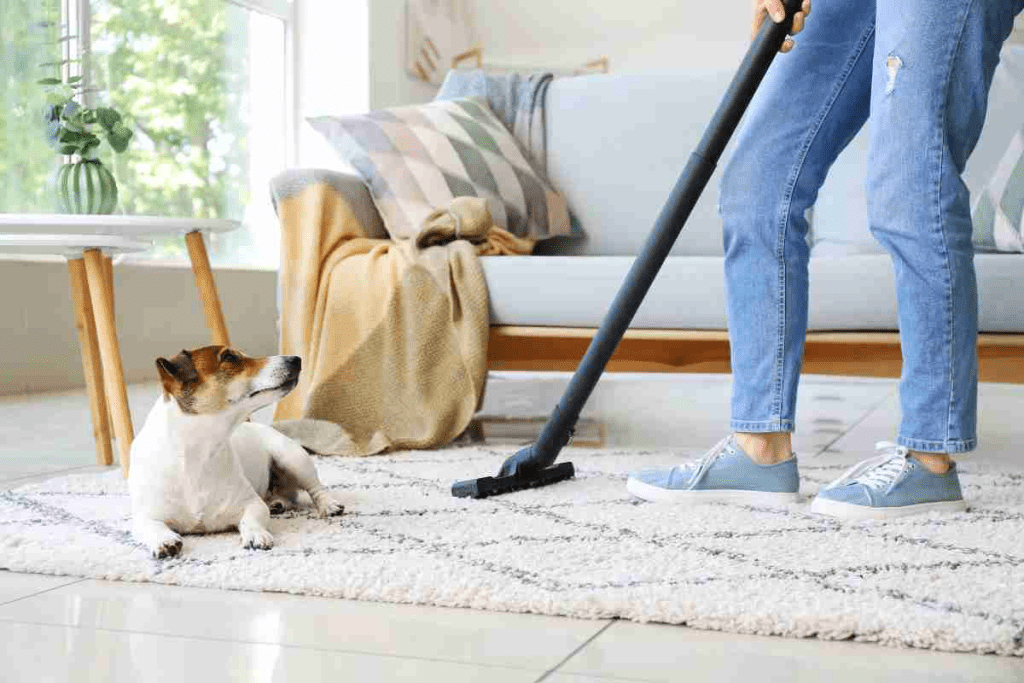When you visit someone’s home, a neat and organized space is often what you first notice. But sometimes, beneath that tidy surface lies hidden dirt and grime. Many people do a quick clean-up before guests arrive, giving the appearance of a spotless environment. However, true cleanliness goes beyond just straightening up—it requires removing dust, grime, and lingering odors. Here’s how to spot the subtle signs that a home may only look clean on the surface.
Understanding the Difference Between Tidy and Clean

A tidy home isn’t necessarily a clean home. Tidying up involves putting things in their places and creating a sense of order, while cleanliness is all about removing dirt, dust, and germs. A house can be tidy yet still harbor hidden messes. Recognizing this difference is key, as it reveals whether the cleaning was just for show or genuinely thorough.
The Role of Scent in Perceived Cleanliness
Our noses can play tricks on us when it comes to sensing cleanliness. A pleasant, fresh scent can make a space feel clean, even if it isn’t. Many people use air fresheners or scented candles to mask unpleasant odors, which can create an illusion of cleanliness. But if you catch a whiff of anything unusual beneath the artificial fragrance, it could hint at neglected areas or hidden dirt. A genuinely clean home has a neutral, fresh smell rather than a heavy reliance on artificial scents.
Spotting Surface-Level Cleaning
One of the easiest ways to make a place look clean quickly is to wipe down visible surfaces like counters and tables. But surface-level cleaning often misses out on areas less frequently noticed, like the tops of shelves, behind furniture, or along the baseboards. Check for inconsistencies—if the countertops sparkle, but the corners have dust or grime, that’s a sign the cleaning effort was only skin-deep.
Cluttered Corners and Hidden Messes
When a house is straightened up in a hurry, clutter often gets shoved into hidden spots like closets, under furniture, or in corners. A clean-looking living room might hide dust balls behind the sofa or piles of clutter in closed-off areas. Check these less obvious spots; if they’re gathering dirt and dust, it’s a clue that the home may not be as clean as it appears.
The State of the Bathroom: The Ultimate Cleanliness Test
Bathrooms are one of the hardest places to keep genuinely clean, making them an excellent indicator of a home’s true cleanliness. A quick spruce-up might include wiping down the sink and organizing toiletries, but a genuinely clean bathroom should have spotless fixtures, clean grout, and no signs of mold or mildew. Peek at the areas that are often neglected, like under the sink, the corners of the shower, or around the base of the toilet. These areas reveal whether the bathroom was only tidied or thoroughly cleaned.
Kitchen Clues: Where Dirt Often Hides
Kitchens are notorious for gathering grime, especially from cooking oils and food crumbs. While countertops might look clean at a glance, pay attention to less obvious spots like cabinet doors, the floor near the stove, and the edges of countertops. Grease buildup on cabinets or crumbs in the corners are telltale signs of a less-than-thorough clean. Don’t forget to check the inside of appliances, such as the microwave or oven—these areas often harbor food splatters and spills, which can be overlooked during a surface clean.
Dusty Surfaces and Shelves: A Neglected Detail
Dust is one of the most noticeable signs of a superficial cleaning job. While tables and countertops might be wiped down, dust can accumulate on shelves, picture frames, and electronics. Running a finger along these surfaces is an easy way to test whether a home has been dusted properly. A truly clean home has dust-free surfaces, showing a commitment to regular maintenance beyond just tidying up.
Pet Hair and Odors: Hidden Indicators of Cleanliness

If pets live in the home, you might find traces of pet hair or odors that are difficult to eliminate with a quick clean-up. Pet owners may overlook fur on furniture, carpets, or in corners during a hurried tidy. Persistent pet smells or stray hair can indicate that deeper cleaning efforts were skipped. A home that’s genuinely clean will have minimized pet odors and regularly vacuumed furniture and floors to keep fur under control.
Floors: Beyond the Surface Appearance
Freshly vacuumed carpets may give the impression of a clean floor, but the real test lies in less visible areas. Dirt and dust often gather along the edges of rooms, under furniture, and in corners. In homes with hard floors, look for sticky spots or dirt accumulating in grout lines. Vacuum lines may create the illusion of cleanliness, but a closer inspection reveals whether the floors were truly cleaned or just given a quick pass.
Windows and Mirrors: Reflectors of True Cleanliness
Mirrors and windows may not seem essential to cleanliness, but they’re a quick way to tell if a place has been deeply cleaned. Streaks, fingerprints, or dust on these surfaces detract from the home’s appearance and show a lack of attention to detail. When mirrors and windows are clean, they reflect light beautifully, adding brightness to the room and enhancing the overall sense of cleanliness.
Conclusion: The Art of Genuine Cleanliness
A truly clean home requires more than a quick tidy-up. Real cleanliness goes beyond appearances, reaching into hidden corners and less visible surfaces. While it’s easy to create the impression of a clean house with a few quick adjustments, maintaining a genuinely clean space involves regular, thorough cleaning practices. By recognizing the signs of surface-level cleaning, you can better appreciate the effort that goes into a spotless, well-maintained home. Whether you’re visiting someone else’s space or assessing your own, these details highlight the difference between a quick tidy and a truly clean environment.


